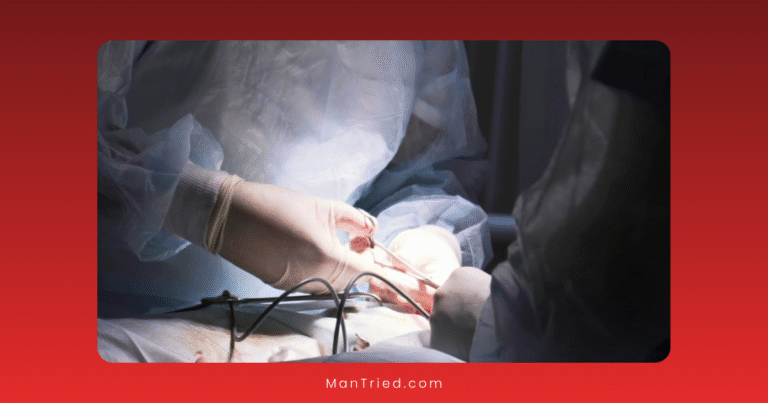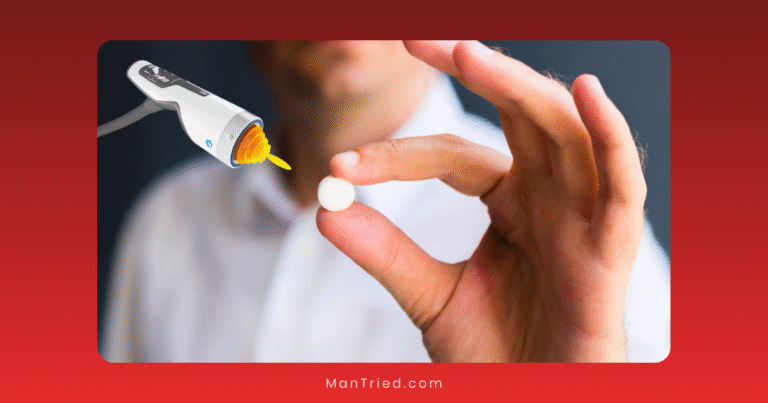Hormone Optimization vs Replacement: Understanding the Difference

When it comes to addressing hormonal imbalances, two distinct approaches have emerged in recent years: hormone replacement therapy (HRT) and hormone optimization therapy (HOT). While these terms are sometimes used interchangeably, they represent fundamentally different philosophies and approaches to hormonal health.
Understanding the differences between these approaches is crucial for making informed decisions about your health. This comprehensive guide explores how hormone optimization and hormone replacement differ in their goals, methodologies, and outcomes.
The Fundamental Difference: Philosophy and Goals
At their core, hormone replacement and hormone optimization represent different paradigms in addressing hormonal health:
Hormone Replacement Therapy (HRT): Restoring to “Normal”
Hormone replacement therapy, as the name suggests, focuses on replacing hormones that have declined below standard reference ranges. The primary goals of HRT include:
- Alleviating symptoms associated with hormonal deficiencies
- Restoring hormone levels to the statistical “normal” range for age and sex
- Preventing complications of hormone deficiency (such as osteoporosis)
- Managing specific conditions like menopause or andropause
According to The LC Family Medicine, “HRT aims to replace deficient hormones to relieve symptoms associated with hormonal imbalances, particularly for menopause and andropause.”
Hormone Optimization Therapy (HOT): Achieving Ideal Function
In contrast, hormone optimization takes a more personalized and functional approach. Its goals include:
- Fine-tuning hormone levels for individual peak function
- Balancing the entire hormonal system, not just individual hormones
- Enhancing overall performance, vitality, and well-being
- Addressing root causes of hormonal imbalances
- Preventing age-related decline in function
As Clareo Plastic Surgery explains, “H.O.T. fine-tunes hormone levels for individual peak function rather than simply replacing what is lost.”
Key Differences in Approach and Methodology
The philosophical differences between these approaches translate into practical differences in how they’re implemented:
1. Reference Ranges vs. Optimal Ranges
Hormone Replacement:
- Uses standard laboratory reference ranges
- Aims to get patients within the “normal” range
- Often focuses on the minimum effective dose
Hormone Optimization:
- Recognizes that “normal” ranges are broad statistical averages
- Aims for the optimal level within or sometimes above the reference range
- Tailors targets to individual needs and symptoms
2. Single Hormone vs. System-Wide Approach
Hormone Replacement:
- Often focuses on one or two primary hormones (e.g., estrogen/progesterone or testosterone)
- Treats each hormone as a separate entity
- May not address interactions between hormones
Hormone Optimization:
- Evaluates the entire hormonal system
- Considers how hormones interact and influence each other
- Addresses multiple hormones simultaneously when needed
3. Testing Methodologies
Hormone Replacement:
- Basic blood tests of major hormones
- Testing primarily to confirm deficiency
- Less frequent monitoring (often annually)
Hormone Optimization:
- Comprehensive testing of multiple hormones and their metabolites
- May include advanced testing like DUTCH testing (Dried Urine Test for Comprehensive Hormones)
- More frequent monitoring and adjustment (typically every 3-6 months)
- May include additional markers like inflammatory markers, nutritional status, and metabolic function
4. Treatment Components
Hormone Replacement:
- Primarily hormone medications
- Standard dosing protocols
- Limited lifestyle interventions
Hormone Optimization:
- Comprehensive approach including:
- Bioidentical hormones
- Nutritional support
- Stress management
- Sleep optimization
- Exercise recommendations
- Targeted supplementation
According to Sheen Vein and Cosmetics, “Treatment plans are tailored to individual needs and can include lifestyle and nutritional support, targeted supplementation, bioidentical hormone replacement therapy (BHRT), and regenerative therapies.”
Bioidentical Hormones: A Common Ground
One area where hormone replacement and optimization often overlap is in the use of bioidentical hormones:
What Are Bioidentical Hormones?
Bioidentical hormones are compounds that are chemically identical to the hormones naturally produced by the human body. They’re typically derived from plant sources like yams or soy and modified in a laboratory to match human hormones exactly.
Common bioidentical hormones include:
- Estradiol (a form of estrogen)
- Estriol (another form of estrogen)
- Progesterone
- Testosterone
- DHEA (dehydroepiandrosterone)
- Pregnenolone
How They’re Used in Both Approaches
In Hormone Replacement:
- Bioidentical hormones may be used as alternatives to synthetic hormones
- Often prescribed in standardized, FDA-approved formulations
- Dosing based on alleviating symptoms while staying within reference ranges
In Hormone Optimization:
- Bioidentical hormones are strongly preferred over synthetic versions
- May be custom-compounded to precise specifications
- Dosing is more individualized and may target the upper end of reference ranges
As noted by A4M, “BHRT uses compounds structurally identical to endogenous hormones such as estradiol, progesterone, and testosterone, typically derived from plant sources.”
Personalization: The Spectrum of Individualized Care
Both approaches offer some degree of personalization, but they differ significantly in the extent and methodology:
Personalization in Hormone Replacement
- Initial dosing based on age, sex, and symptom severity
- Adjustments based primarily on symptom response
- Standardized protocols with some individual variation
- Focus on bringing levels into normal range
Personalization in Hormone Optimization
- Comprehensive initial assessment including:
- Detailed medical history
- Lifestyle analysis
- Genetic factors
- Environmental influences
- Nutritional status
- Stress levels
- Sleep quality
- Treatment plans highly individualized
- Ongoing adjustments based on both symptoms and comprehensive testing
- Consideration of hormone metabolism and receptor sensitivity
According to Vallabelle Wellness, “In 2025, hormone therapy is increasingly personalized, utilizing advanced diagnostic tools and genomic testing to tailor treatment plans to individual hormonal profiles, medical histories, and lifestyles.”
Comparing Benefits and Limitations
Each approach offers distinct advantages and potential drawbacks:
Hormone Replacement Benefits
- Well-established protocols with decades of research
- Often covered by insurance
- Effective for severe deficiency states
- Clear guidelines for practitioners
- Typically lower cost
Hormone Replacement Limitations
- May not address subclinical imbalances
- Limited focus on root causes
- Less individualized approach
- May not optimize overall well-being
- Typically focuses only on major sex hormones
Hormone Optimization Benefits
- Addresses subclinical imbalances before they become clinical deficiencies
- Comprehensive approach to overall hormonal health
- May provide superior symptom relief and quality of life improvements
- Considers individual biochemical uniqueness
- Addresses multiple hormonal systems (sex hormones, thyroid, adrenals)
Hormone Optimization Limitations
- Often not covered by insurance
- Higher out-of-pocket costs
- Requires more practitioner expertise
- More time-intensive for both patient and provider
- May involve more complex protocols
The Functional Medicine Perspective
Hormone optimization is closely aligned with functional medicine principles, which focus on identifying and addressing the root causes of health issues rather than simply treating symptoms.
Key Functional Medicine Principles in Hormone Optimization
- Biochemical individuality: Recognizing that each person has unique nutritional and hormonal needs
- Patient-centered approach: Focusing on the whole person, not just isolated hormone levels
- Systems biology: Understanding how hormones interact with other bodily systems
- Upstream treatment: Addressing root causes rather than downstream symptoms
- Prevention-oriented: Identifying and correcting imbalances before they cause disease
As 1st Optimal Wellness explains, “Functional medicine emphasizes understanding the interconnectedness of bodily systems rather than treating symptoms in isolation.”
Who Might Benefit from Each Approach?
Different individuals may be better suited to one approach over the other:
Hormone Replacement May Be Better For:
- Individuals with severe hormone deficiencies (such as primary hypogonadism or premature menopause)
- Those seeking insurance coverage for treatment
- Patients who prefer a more conventional medical approach
- Those with contraindications to higher hormone levels
- People seeking symptom relief with minimal complexity
Hormone Optimization May Be Better For:
- Individuals with subclinical or borderline hormone imbalances
- Those seeking optimal performance and vitality, not just symptom relief
- Patients with complex hormonal issues affecting multiple systems
- People who haven’t responded well to conventional HRT
- Those willing to invest more time and resources in their hormonal health
The Testing Difference: A Closer Look
Testing protocols represent one of the most significant practical differences between these approaches:
Standard HRT Testing
- Basic blood panels measuring:
- Total testosterone (men)
- Estradiol and sometimes progesterone (women)
- Thyroid-stimulating hormone (TSH)
- Sometimes free T4
- Testing frequency: Initially and then annually or when symptoms change
- Focus on ruling out disease states rather than optimizing function
Comprehensive Hormone Optimization Testing
According to UltaLab Tests, a more comprehensive approach includes:
- Expanded blood testing:
- Total and free testosterone
- Estradiol, estrone, estriol
- Progesterone
- DHEA-S
- Sex hormone-binding globulin (SHBG)
- Complete thyroid panel (TSH, free T3, free T4, reverse T3, thyroid antibodies)
- Cortisol (ideally at multiple time points)
- Insulin and glucose markers
- Inflammatory markers
- Nutritional markers (vitamin D, B12, ferritin, etc.)
- Advanced hormone testing:
- DUTCH testing for hormone metabolites
- Salivary hormone testing for free hormone levels
- Urinary hormone metabolite testing
- Testing frequency: Every 3-6 months during optimization, then every 6-12 months for maintenance
Delivery Methods: Beyond Pills and Patches
Both approaches utilize various delivery methods, though hormone optimization often emphasizes certain methods over others:
Common Delivery Methods in Both Approaches
- Oral tablets/capsules: Convenient but pass through liver (first-pass effect)
- Transdermal creams/gels: Bypass liver, provide steady levels
- Patches: Consistent delivery, easy application
- Injections: Higher peaks, may require more frequent administration
Methods More Common in Hormone Optimization
- Pellet therapy: Subcutaneous implants lasting 3-6 months
- Troches/lozenges: Absorbed through oral mucosa, bypassing liver
- Customized compounded formulations: Precisely tailored to individual needs
- Micronized hormones: Better absorption and utilization
According to Vallabelle Wellness, “Advanced delivery methods for hormone therapy in 2025 include transdermal patches with enhanced technology, microneedle patches, subcutaneous pellets, and intranasal sprays.”
The Future of Hormonal Health: Convergence or Divergence?
As our understanding of hormonal health evolves, we’re seeing some interesting trends in how these approaches relate to each other:
Areas of Convergence
- Increasing use of bioidentical hormones in both approaches
- Greater recognition of individual variation even in conventional HRT
- More comprehensive testing becoming standard in both approaches
- Focus on quality of life rather than just disease prevention
Continuing Differences
- Philosophical foundations remain distinct
- Insurance coverage continues to favor conventional HRT
- Regulatory oversight differs between approaches
- Training and certification of providers follows different paths
Making Your Decision: Questions to Consider
If you’re trying to decide which approach might be right for you, consider these questions:
- What are your primary goals? Symptom relief, disease prevention, or optimal performance?
- What is your budget and insurance situation? Can you afford out-of-pocket expenses?
- How complex of a protocol are you willing to follow? Multiple supplements, lifestyle changes, etc.?
- What is your tolerance for medical uncertainty? Are you comfortable with approaches that may have less long-term research?
- What kind of relationship do you want with your healthcare provider? Traditional doctor-patient or collaborative partnership?
- How much time can you invest in appointments, testing, and protocol adjustments?
The Bottom Line
Hormone replacement and hormone optimization represent different philosophies and approaches to hormonal health. Neither is inherently “better” than the other—they simply serve different purposes and may be appropriate for different individuals.
Hormone replacement focuses on restoring deficient hormones to normal ranges to alleviate symptoms and prevent complications. Hormone optimization takes a more comprehensive approach, seeking to fine-tune hormone levels for optimal function while addressing lifestyle factors and root causes.
The best approach for you depends on your individual health status, goals, resources, and preferences. Many people find that a middle ground—incorporating elements of both approaches—works best for their needs.
Regardless of which path you choose, working with a knowledgeable healthcare provider who listens to your concerns and respects your goals is essential for achieving the best possible outcomes on your hormonal health journey.
Have you had experience with either hormone replacement or optimization? Share your thoughts in the comments below.






